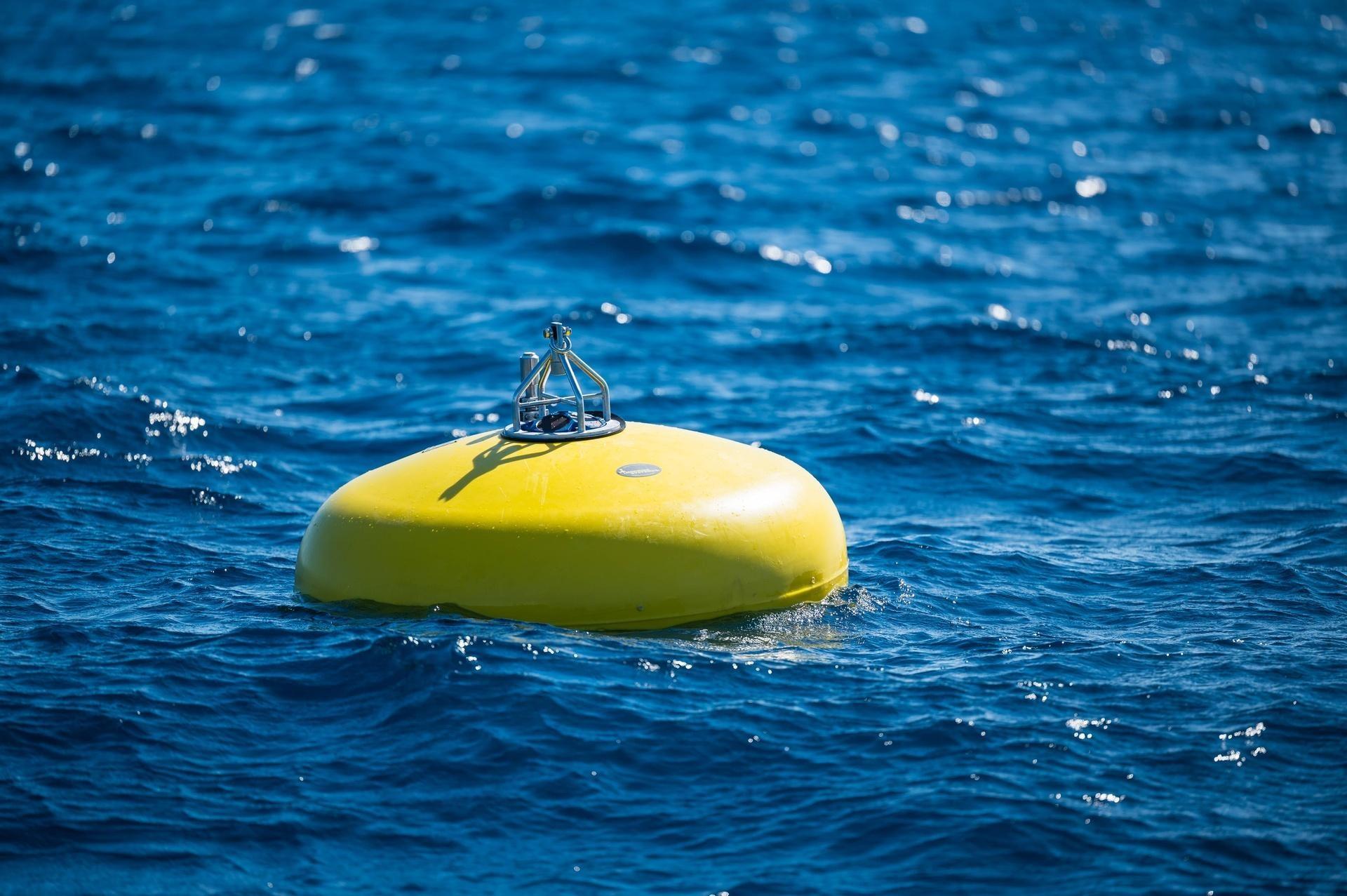The Electricity for Your TV May Come from Ocean Currents in the Future


It looks more like an alien spaceship than a research tool, but that giant yellow sphere could help unlock the secrets of harnessing renewable ocean energy.
The 800-pound sphere is a sub-surface buoy. It was deployed in water 230 meters (754 feet) deep on the upper slope of the continental shelf just east of Cape Hatteras. Most importantly, the site is just under the edge of the Gulf Stream.
The Gulf Stream is a warm and powerful ocean current that originates in the Gulf of Mexico and flows into the Atlantic at the tip of Florida before accelerating along the eastern coast of the United States.
Because the Gulf Stream is so strong and constant and close to shore at Cape Hatteras, the area is a focus of the North Carolina Renewable Ocean Energy Program’s (NCROEP) Gulf Stream Energy Resource Characterization. The goal is to harness the power of Gulf Stream currents as a renewable energy source for the state of North Carolina.
“We need to better understand and characterize the different water masses present at the study site,” explains Mike Muglia, Ph.D., Research Associate with the UNC Coastal Studies Institute and leader of the Gulf Stream Resource Assessment for the Renewable Ocean Energy Program. “We are interested in measuring currents near the surface, as well as measuring the salinity, temperature and depth of the water columns."

Those depth measurements will come from devices attached to the buoy; one is located about 100 meters (328 feet) below the surface and the other is 165 meters (541 feet) deep.
Researchers expect to find waters from the Gulf Stream, waters coming down from the slope of the continental shelf, and regional coastal waters all mixing together off Cape Hatteras.
“It’s an interesting place because Cape Hatteras is the ‘Mason Dixon Line’ for shelf oceanography to the north and south on the east coast,” adds Muglia.
The new buoy system joins an extensive array of instruments already on site. Dr. Muglia’s research team has a pod on the ocean bottom with a 150 kHz Acoustic Doppler Current Profiler (ACDP) which can take nearly full water column measurements, and a passive acoustic hydrophone to listen for the presence of marine mammals.
The buoy system deployed at the surface will complement the devices on the bottom by providing higher-resolution (1 meter) current measurements closer to the ocean surface as well as water temperatures and salinity throughout the water column.

The new buoy system will collect information for about one year.
To see other projects being tested to harness ocean energy, check out this story Sci NC produced.
Hear more about hydrokinetic (or wave and current) energy from Dr. Muglia and other researchers in this Sci NC video story produced in 2014:
As North Carolina's energy needs continue to grow, scientists at the University of North Carolina Coastal Studies Institute are testing new technologies that would harness the power of the ocean to create new sources of energy.